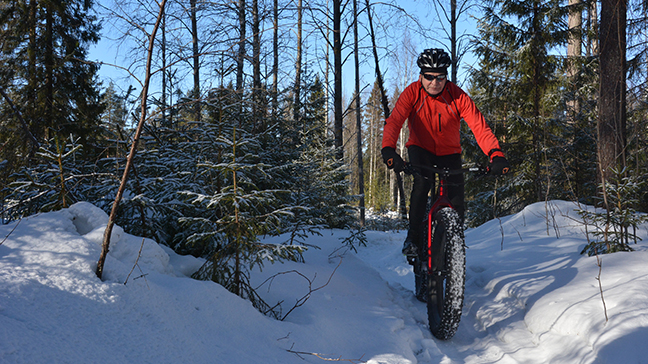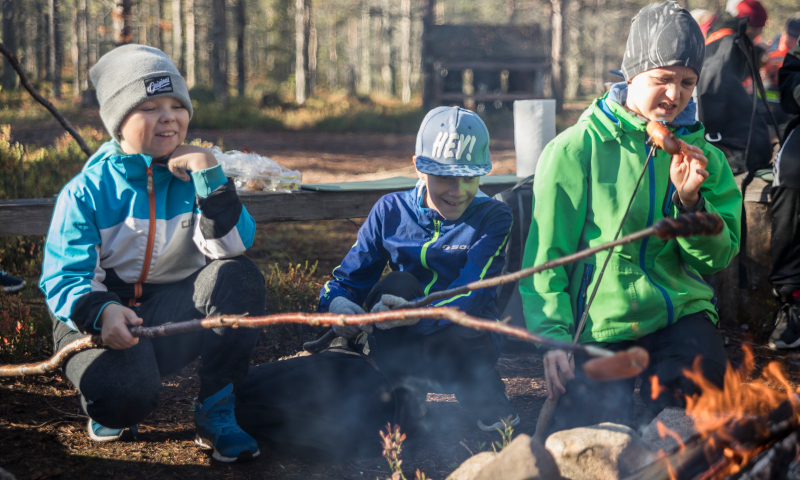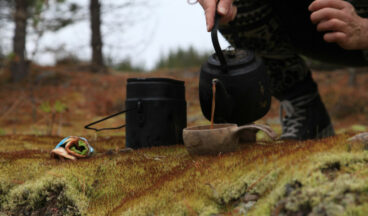Multiple-use forest is a renewable natural resource treasured by us

Around one third of Finnish forests are owned by the state. The growth in state-owned forests exceeds the harvesting volumes, and the forests serve as an important carbon sink. Commercial multiple-use forests are also a source of recreation, well-being and wild foods.
What is multiple-use forest?
The state-owned lands on which Metsähallitus Forestry Ltd operates are multiple-use forests.
As the name indicates, they are open for a wide range of users and a variety of purposes, including outdoor exercise, hiking and many types of recreation from walking or skiing to camping and snowmobiling. Some go to the forests to pick berries or mushrooms, while others hunt and graze their reindeer there. All this is possible while the forests are also in commercial forestry use.
The forests are Finland’s most important natural resource. Wood is used in construction, furniture, packaging materials, clothing and various biomaterials that can replace plastic. Growing forests efficiently bind carbon from the atmosphere and serve as an important carbon sink. Forests are also needed for recreation and conserving biodiversity.
The growth in Finnish forests exceeds the harvested volumes. The state-owned multiple-use forests grow by 13.3 million cubic metres annually (National Forest Inventory, Natural Resources Institute Finland), while about six million cubic metres of timber are harvested. At the annual level, harvesting operations are carried out in approx. 2 per cent of the state’s forest area.
Conifers are the predominant tree species in Finnish forests. Two thirds of the state-owned forests consist of unmixed pine forests; mixed pine forests account for one fifth, while the share of spruce and birch forests is smaller.

On average, state-owned land is less productive than the lands of other forest owners. The state also has a higher share of low-productivity and non-productive lands where no harvesting takes place.
Most of the productive forests are young cultivated stands. Many of them have reached the thinning phase and provide pulp and paper mills with pulp wood and heating plants with energy wood. The second largest share comprises seedling stands and mature cultivated forests, which produce log wood for sawmills.
Whenever an area is felled, the landowner has an obligation to take care of forest regeneration. This is why 150 million trees are planted in Finland every year. More than 20 million of them are planted in state-owned multiple-use forests. Around 80% of the state-owned forests are regenerated by sowing or planting, while about one fifth are naturally renewed.
Free access

Under Finnish legislation, so-called everyman’s rights are in force. This means that you are allowed to go about in the forests regardless of who owns them. Everyman’s rights also include picking berries and mushrooms, swimming, winter fishing and angling.
Such activities as hunting and off-road traffic are subject to a permit, however. A fisheries management fee must be paid to fish, excluding for winter fishing and angling.
A permit is also needed for scientific research and business activities.
Some multiple-use forests have hiking areas and recreation forests established by Metsähallitus’ decisions equipped with marked trails and campfire sites. In others you can use forest roads and paths or walk through the woods – whatever you feel like doing.
Cultural heritage in multiple-use forests
Human activity has left traces in Finnish forests over the centuries. Typically of Finland, cultural heritage has evolved in close affinity with nature. State-owned areas used for commercial forestry also contain numerous cultural heritage sites.
Between 2010 and 2015, Metsähallitus completed a major project in which cultural heritage in state-owned forests was inventoried. This project funded by Metsähallitus Forestry Ltd was the largest ever inventory of cultural heritage sites in Finland.
Information on cultural heritage sites in multiple-use forests has been saved in Metsähallitus’ geographic information system. This information resource is constantly built up in connection with ordinary forest planning work, and it is available for Metsähallitus officers when planning forestry management and harvesting. The data in the Ancient Relics Register maintained by the Finnish Heritage Agency on ancient monument sites located on state land are updated annually in Metsähallitus’ geographic information system.
An existing ancient monument or cultural heritage site is usually not an obstacle to forestry actions as long as the site is not damaged or destroyed. Working together with forestry organisations, the Finnish Heritage Agency has prepared instructions for operating on small ancient monument sites. Trees often need to be removed to manage the site, whereas the soil should not be tilled as a rule.